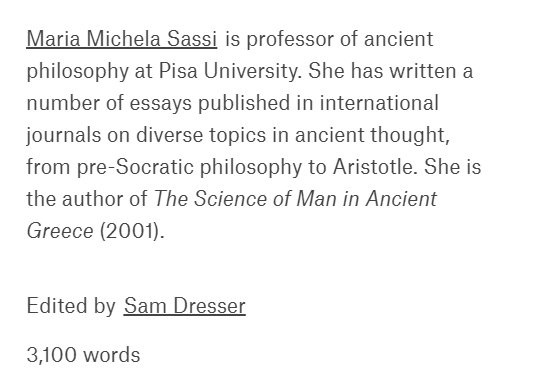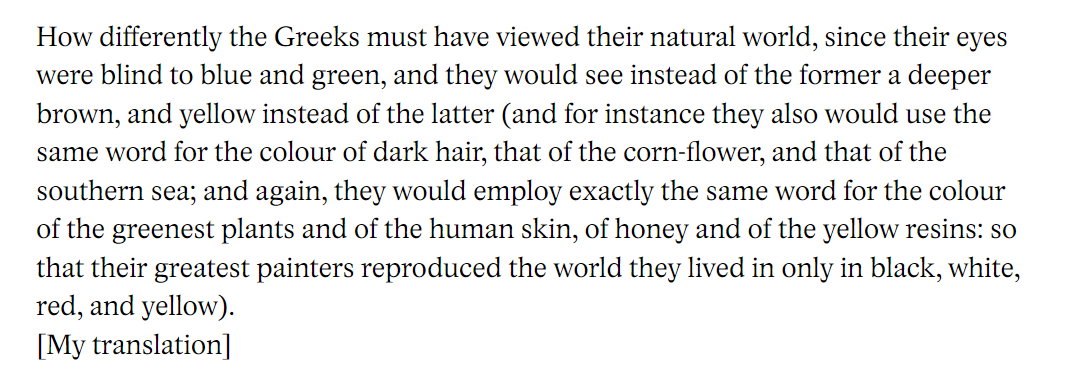The sea was never blue [View all]
 The Greek colour experience was made of movement and shimmer. Can we ever glimpse what they saw when gazing out to sea?
https://aeon.co/essays/can-we-hope-to-understand-how-the-greeks-saw-their-world
The Greek colour experience was made of movement and shimmer. Can we ever glimpse what they saw when gazing out to sea?
https://aeon.co/essays/can-we-hope-to-understand-how-the-greeks-saw-their-world


Homer used two adjectives to describe aspects of the colour blue:
kuaneos, to denote a dark shade of blue merging into black; and
glaukos, to describe a sort of ‘blue-grey’, notably used in Athena’s epithet
glaukopis, her ‘grey-gleaming eyes’. He describes the sky as big, starry, or of iron or bronze (because of its solid fixity). The tints of a rough sea range from ‘whitish’ (
polios) and ‘blue-grey’ (
glaukos) to deep blue and almost black (
kuaneos,
melas). The sea in its calm expanse is said to be ‘pansy-like’ (
ioeides), ‘wine-like’ (
oinops), or purple (
porphureos). But whether sea or sky, it is never just ‘blue’. In fact, within the entirety of ancient Greek literature you cannot find a single pure blue sea or sky.
Yellow, too, seems strangely absent from the Greek lexicon. The simple word
xanthos covers the most various shades of yellow, from the shining blond hair of the gods, to amber, to the reddish blaze of fire.
Chloros, since it’s related to
chloe (grass), suggests the colour green but can also itself convey a vivid yellow, like honey. The ancient Greek experience of colour does not seem to match our own. In a well-known aphorism, Friedrich Nietzsche captures the strangeness of the Greek colour vocabulary:
How is this possible? Did the Greeks really see the colours of the world differently from the way we do?
Johann Wolfgang von Goethe, too, observed these features of Greek chromatic vision. The versatility of
xanthos and
chloros led him to infer a peculiar fluidity of Greek colour vocabulary. The Greeks, he said, were not interested in defining the different hues. Goethe underpinned his judgment through a careful examination of the theories on vision and colours elaborated by the Greek philosophers, such as Empedocles, Plato and Aristotle, who attributed an active role to the visual organ, equipped with light coming out of the eye and interacting with daylight so as to generate the complete range of colours.

Goethe also noted that ancient colour theorists tended to derive colours from a mixture of black and white, which are placed on the two opposite poles of light and dark, and yet are still called ‘colours’. The ancient conception of black and white as colours – often primary colours – is remarkable when compared with Isaac Newton’s experiments on the decomposition of light by refraction through a prism. The common view today is that white light is colourless and arises from the sum of all the hues of the spectrum, whereas black is its absence.
snip




